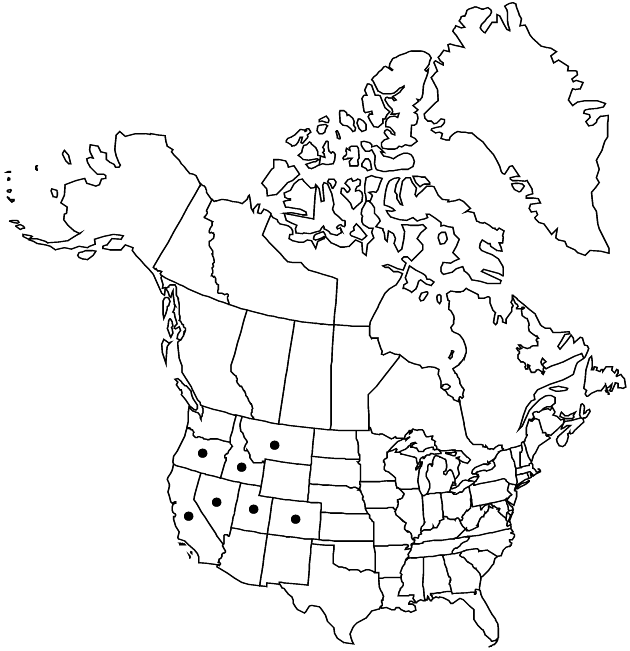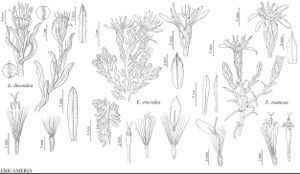Difference between revisions of "Ericameria discoidea"
Phytologia 68: 153. 1990.
imported>Volume Importer |
imported>Volume Importer |
||
| Line 64: | Line 64: | ||
|publication year=1990 | |publication year=1990 | ||
|special status=Illustrated;Endemic | |special status=Illustrated;Endemic | ||
| − | |source xml=https:// | + | |source xml=https://bitbucket.org/aafc-mbb/fna-data-curation/src/2e0870ddd59836b60bcf96646a41e87ea5a5943a/coarse_grained_fna_xml/V19-20-21/V20_90.xml |
|tribe=Asteraceae tribe Astereae | |tribe=Asteraceae tribe Astereae | ||
|genus=Ericameria | |genus=Ericameria | ||
Latest revision as of 20:06, 5 November 2020
Plants 10–40 cm. Stems erect to spreading, abundantly branched, twigs green when young, concealed by whitish, pannose tomentum, sporadically stipitate-glandular. Leaves ascending to spreading; blades linear or oblong to oblanceolate (flat), 10–35 × 2–7 mm, midnerves evident (1–2 fainter, collateral nerves often present), (margins often undulate) apices acute to obtuse, usually apiculate, faces usually stipitate-glandular, resinous; axillary fascicles absent. Heads borne singly or in cymiform to racemiform arrays. Peduncles 3–15 mm (bracts 0–3, reduced, leaflike, whitish tomentose and usually stipitate-glandular). Involucres obconic, 9–13 × 6–10 mm. Phyllaries 12–17 in 2–3 series, green to tan, lanceolate to oblong, 6–10 × 1–2 mm, subequal, outer herbaceous or distally so, inner mostly chartaceous, midnerves evident, (margins of outer often distally stipitate-glandular, of inner narrowly membranous, sometimes minutely ciliolate) apices acute to attenuate, abaxial faces stipitate-glandular. Ray florets 0. Disc florets 10–26; corollas 9–11 mm. Cypselae brownish, narrowly oblong to narrowly ovoid, 5–6 mm, villous; pappi tan, 8.5–11 mm. 2n = 18.
Phenology: Flowering late summer–fall.
Habitat: Rocky, open or sparsely wooded slopes, often in coarse talus
Elevation: 2500–3800 m
Distribution

Calif., Colo., Idaho, Mont., Nev., Oreg., Utah.
Discussion
Ericameria discoidea is common in the Rocky Mountains.
Selected References
None.
